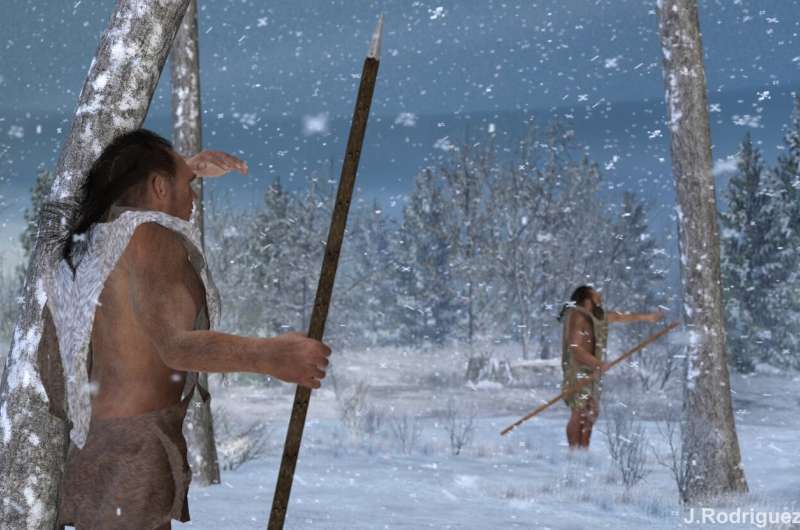Shivering in the Pleistocene: New analyses of prehistoric climate conditions map human adaptations to cold

Jesús Rodríguez and Ana Mateos, scientists at the Centro Nacional de Investigación sobre la Evolución Humana (CENIEH), working with the geographer Christian Willmes of the University of Cologne (Germany), have analyzed the climatic conditions humans experienced in western Europe during the Middle Pleistocene, evaluating their possible adaptations to the cold using a thermoregulation model that simulates an individual's heat loss during sleep.
The Middle Pleistocene (125,000-780,000 years ago) was marked by periodic oscillations between a climate similar to today's and much cooler phases. In this work, which has just been published in the Journal of Human Evolution, the temperatures humans had to endure in Europe during several of these climatic phases were estimated with the help of paleotemperature maps. On the basis of these maps, generated by Willmes, the temperatures for a total of 68 sites with documented human presence between 360,000 and 470,000 years ago were obtained.
The results of this research demonstrate that humans had to withstand very low temperatures during this period and, surprisingly, not only during the glacial phases, but also at milder times, even at places in the Iberian Peninsula such as Ambrona or Atapuerca. "That humans were able to endure such harsh conditions is difficult for us to imagine if we bear in mind that evidence for the use of fire in Europe during this period is extremely sparse. In fact, many researchers think that they were not capable of generating and using fire habitually," explains Rodríguez.
Battling the cold without fire
To assess the efficacy of other strategies for combating the cold, the researchers used a mathematical model that simulates heat loss during sleep and applied it to one male and one female individual from the Sima de los Huesos site in Atapuerca (Burgos). "This enabled us to evaluate the insulating effects of a fur covering, of a thick layer of subcutaneous fat and of producing internal heat through metabolism, in addition to allowing for heat loss due to wind action," says Mateos.
Exposure to cold, especially at night, would represent a real challenge for thermoregulation. There is a limit to the metabolic response cold temperatures at night elicit, but where physiological mechanisms do not reach, human behaviors can plug the gap, as Mateos says: "They could put up with very low nighttime temperatures if they slept covered in furs, especially if they did this as a group in a spot where they were sheltered from the wind."
More information: Jesús Rodríguez et al. Shivering in the Pleistocene. Human adaptations to cold exposure in Western Europe from MIS 14 to MIS 11, Journal of Human Evolution (2021). DOI: 10.1016/j.jhevol.2021.102966
Journal information: Journal of Human Evolution
Provided by CENIEH




















